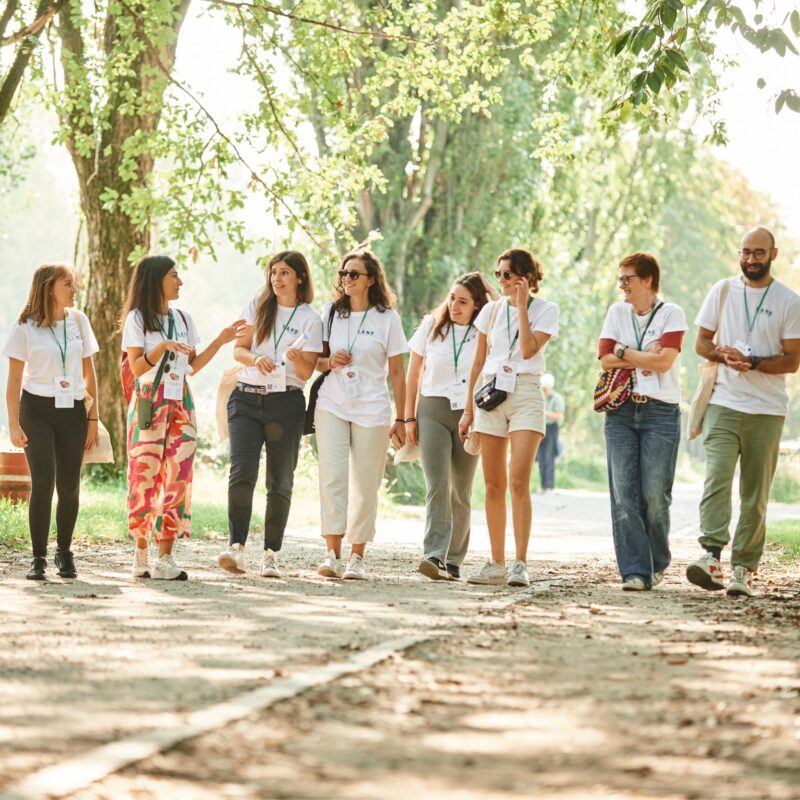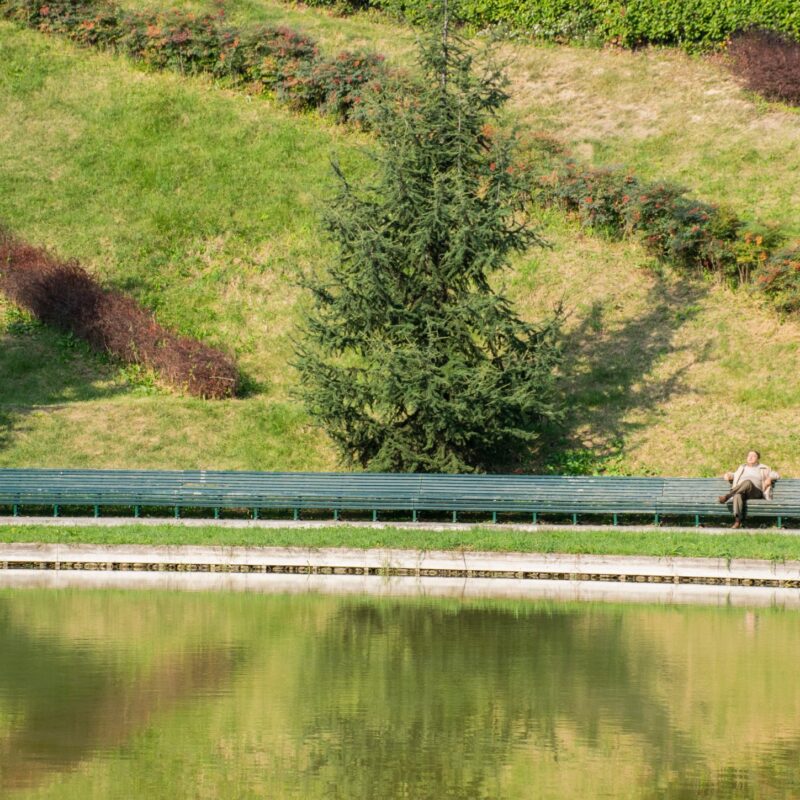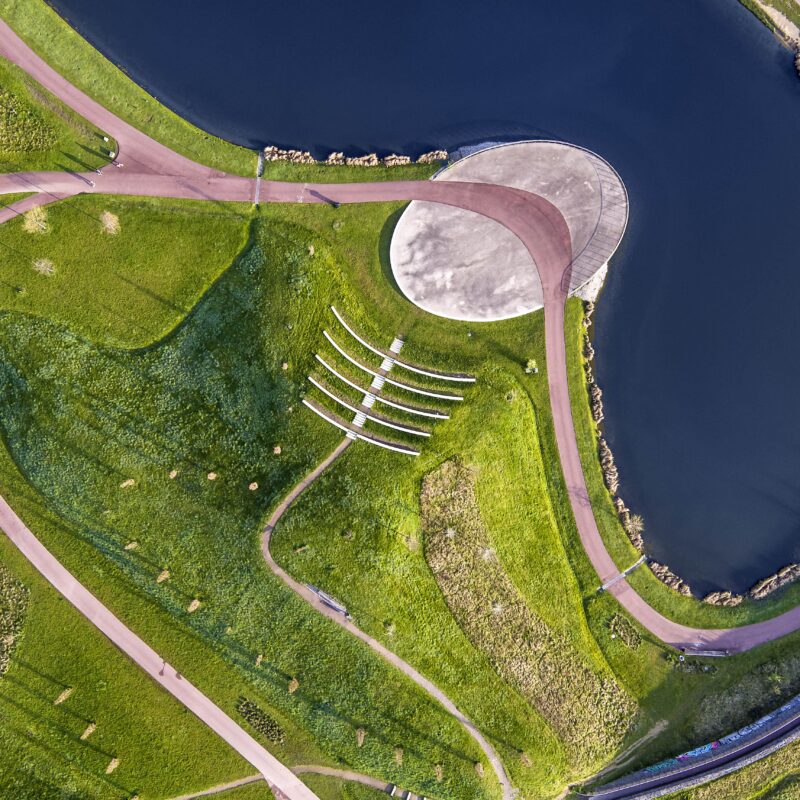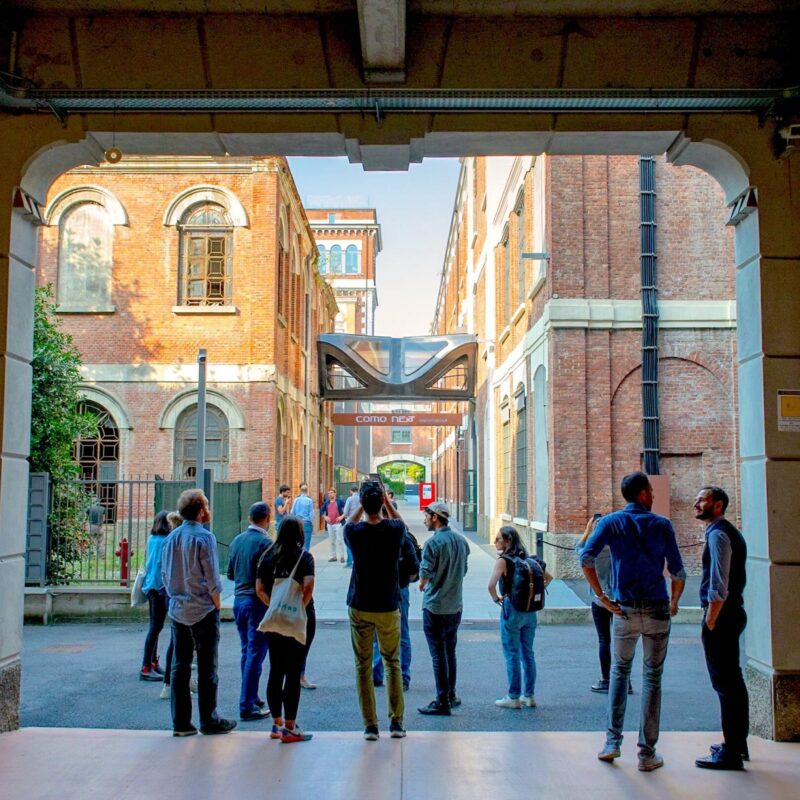
Instruments, Methods, Solutions
Solutions of the LAND research lab: How the LAND Research Lab is helping to make cities and rural areas more livable, climate-positive and resource-efficient.
By Andrea Balestrini.
The decade up to 2030 will be decisive in turning our lives around.
Everyone’s talking about climate protection and resilience, about energy efficiency and saving water. The issue of sustainability is front and center for cities, public entities and companies. The decade up to 2030 will be decisive for turning around current lifestyles and production processes and accelerating plans to achieve the UN Sustainable Development Goals (SDGs). National and international institutions as well as citizens require clear information and concrete action to tackle and achieve this goal.
Applied Research
Can you make sustainability quantifiable? That is our task. Due to its multidisciplinary approach, sensitivity to local context, and responsive attitude to societal challenges, landscape design is emerging as a leading discipline in urban and territorial transformation processes. So here at the LAND Research Lab (LRL), we’re developing tools to do this. This is not purely scientific research, but rather applied research and practice supported by theory.
LRL’s goal is to identify collaborative practices and data-driven methods to make cities and rural areas more livable, climate resilient, and resource-efficient: through our Sustainability Compass, for example (see title photo of the article). This is a new tool that makes the environmental and socio-economic impacts of landscape projects visible and measurable within the framework of the ecological transition driven by the EU Green Deal. The compass evaluates the impact of projects and regional strategies on the targets of UN Agenda 2030 and relates them to the values of the New European Bauhaus: beauty, sustainability, inclusion. LRL also offers consulting services in developing and evaluating nature-based solutions, and sustainability strategies. It cooperates within the framework of EU-financed projects and their networks. One of these is “UNaLab” (Urban Nature Labs), with 28 international partners. In Genoa, we’re supporting a pilot project to transform a former barrack in a densely populated and socially diverse neighborhood into a public park. The project deploys various nature-based solutions to address multiple local challenges (water management, heat stress, and lack of accessible open space). The monitoring plan and governance guidelines developed for the project allow such solutions to be transferred to other situations. Another EU project, called “T-Factor,” makes transformative change and time the central factors of new approaches to urban renewal. With 25 partners and six pilot projects (such as MIND, the innovation district rising on the former 2015 World Expo hold in Milan), we’re developing an international platform to support urban development by facilitating knowledge exchange and fostering practices regarding temporary uses and inclusive partic- ipation in large regeneration masterplans. As part of LAND, LRL also promotes continued learning, innovation and exchange of practices within the company to support its projects.
Best Practices
The significance of these projects is easy to see. Europe has been severely impacted by the effects of climate change. Economic losses in the EU due to flooding will rise from EUR 4.9 billion annually to EUR 23.5 billion by 2050 (in a worst-case scenario, costs could even increase fivefold). But according to the Nature Climate Change Report, flood losses could be reduced by 30 percent by 2050 if around EUR 1.8 billion is invested yearly in flood protection measures. Across Europe, certain best practices show the real impact of mitigation and adaptation projects in reducing economic losses. These include our regional green infrastructure projects and new productive landscapes on coal mines and wastelands in the Ruhr region, climate-adaptive restoration of valley floors and riverfronts in Ticino, and floodplains and rain parks in Italy.
Natured-Based Solutions
To quantify and explain environmental impacts in landscape projects, we have added a new dimension to the BIM (Building Information Modelling) interactive cloud model: LIM landscape information modelling®. LIM helps our clients and partners in designing, implementing and monitoring nature-based solutions for greener and healthier cities, using a data-driven approach. “Nature is eternal life, generation and motion,” said Goethe. It’s a dynamic element that grows and accomplishes more and more over time. So LIM is creating scenarios that measure impact on air quality, water management, soil condition, and plant growth across the lifespan of vegetation to improve the well-being of people living in cities. For example, vegetation can be used in green roofs, which regulate the internal temperature of houses, absorb rainfall, and promote biodiversity. This multi-benefit approach is how nature-based solutions have now found their way into official EU climate strategies.
Many cities are taking steps to hasten the process toward a more robust regenerative economy by promoting sustainable mobility, participatory planning, and the use of digital infrastructure. Yet we should not forget that urban green areas must play a fundamental role in preventing the unhealthy partitioning of open space and decline in quality of life. The mission stated in the regenerative urban development strategy, “Reconnecting people with nature,” is the basis of LAND’s research on adaptive design of the urban landscape, where streets are considered to be a shared ecosystem, water-sensitive design is promoted, urban reforestation becomes essential, slow mobility enhances quality of life, and last but not least, digital technologies make it possible to extend, connect, and talk about landscapes. This is why we can talk about a sustainability decade. In this regard, LAND is committed to identifying new opportunities for the resilient development of communities, based on a pact between people and Nature that can respond to societal changes and benefit from the potential of technology.
The author studied landscape architecture in Stuttgart, among other places. He has contributed to research projects under the German Ministry for Science and Research, conducted one year of baseline studies in Lima (Peru), and now directs the LAND Research Lab in Milan.
Nature is eternal life, generation and motion.
Read other Articles from this Edition






